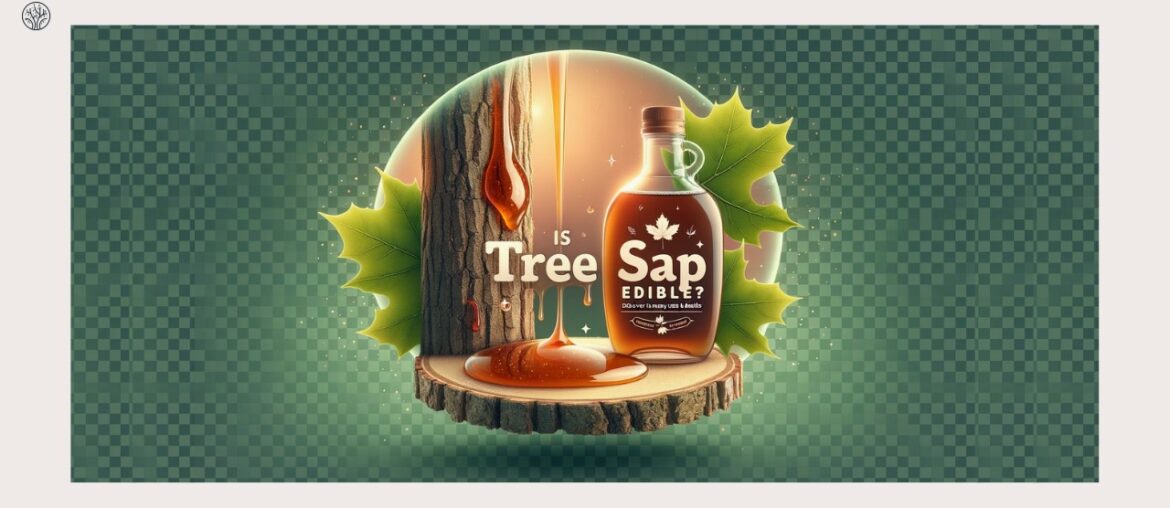Is tree sap edible? The quick answer is yes.
But hold on, it’s more complex than that. While many tree saps are safe for consumption, there are others that you should steer clear of.
Discover which tree saps are edible, how they are used, and the benefits they provide below.
Uses Of Tree Sap
Sap is the blood of a tree, packed with essential nutrients and minerals. It provides energy to the tree’s branches when green leaves and buds start growing in the spring.
Tree sap is an incredibly versatile substance with a wide range of applications. Whether in day-to-day life, as a specialized remover, or even in your diet, the uses of tree sap extend far beyond its sticky reputation.
Tree Sap In Daily Life
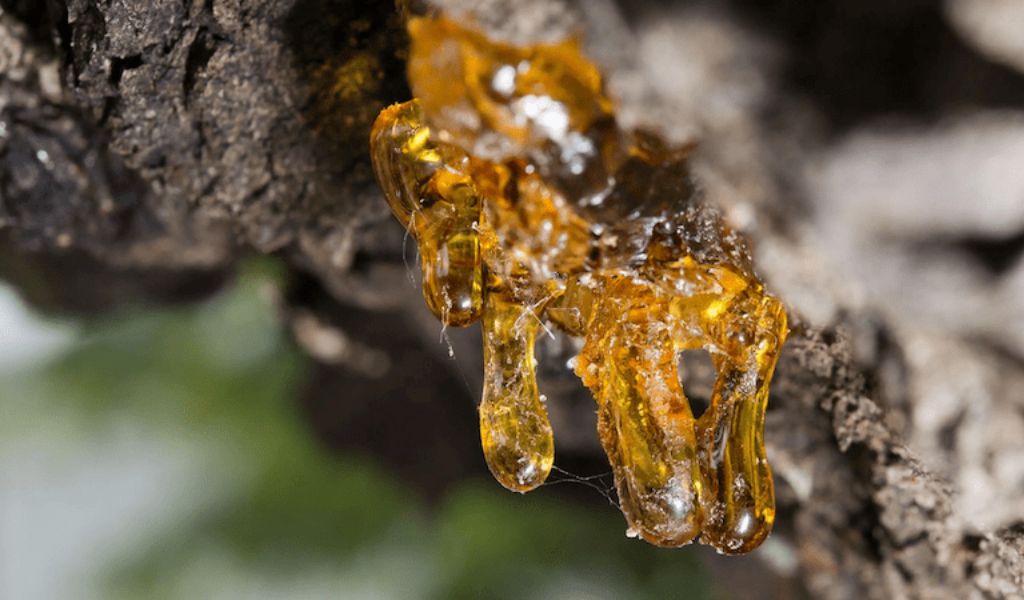
As mentioned in our last blog about the flammability of tree sap, this substance benefits our daily lives in many ways.
- Certain tree saps, such as pine resin and eucalyptus, are the main ingredients to create adhesives and glues.
- Some cultures have historically used tree saps for their medicinal properties.
- Tree resins are also a part of the manufacturing process of incense and perfumes.
- Some tree saps, like those extracted from particular pine trees, work as natural insect repellents.
- Tree saps are vital to producing various products, including varnishes and coatings, and as a base ingredient in the formulation of specific essential oils.
As you can see, the diverse uses of tree sap have evolved over time, and their prevalence may differ by region and culture. Yet, this natural resource continues to exert a significant influence on our everyday lives, offering countless valuable uses.
Tree Sap Remover
Ironically, tree sap can be both the problem and the solution for stubborn stains and sticky residues. The processed form of pine sap, turpentine, is a remarkable solvent. Used for centuries, it can tackle an array of stubborn substances.
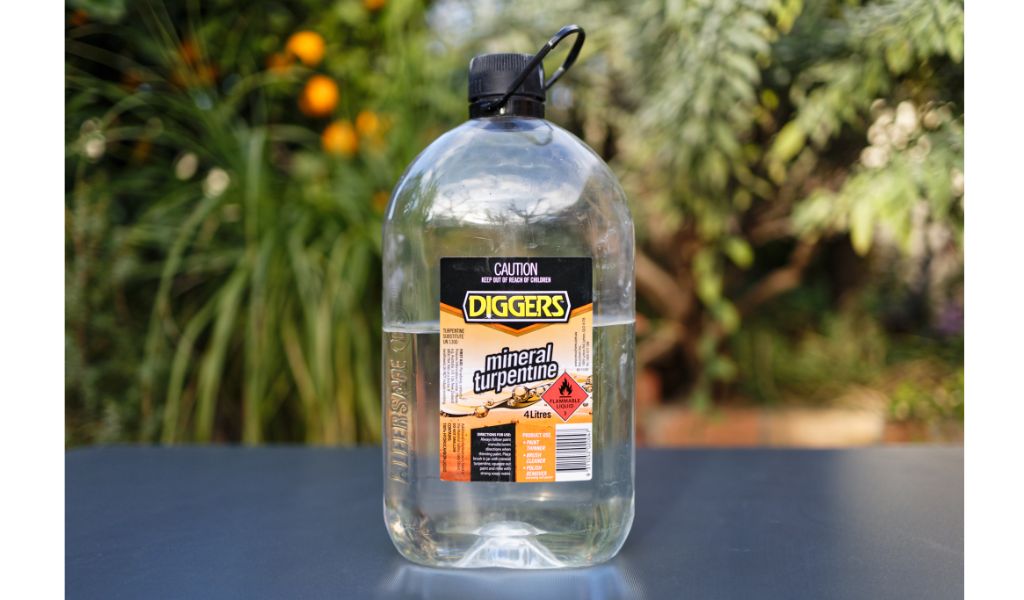
It’s not just about removing other saps; turpentine works wonders in stripping paint, eliminating varnish, and cleaning brushes. Safe to say, this sap-derived product proves that tree sap is much more than just a sticky annoyance; it’s a reliable cleaner, too.
Nature’s Energy Drink
Many might not know, but tree sap is the original, all-natural energy booster. Especially in spring, when trees generate copious amounts of sap, this clear liquid offers a cocktail of minerals and natural sugars. Drinking it can not only hydrate you but also give a quick energy boost that comes with added nutritional benefits.
Birch and maple saps are particularly renowned for this purpose. These saps are like nature’s electrolyte drinks, packed with trace minerals like manganese, calcium, and potassium. Just a small amount can significantly fill lost nutrients and revive your body. It’s no wonder, then, that many hikers and outdoor enthusiasts swear by tree sap as a revitalizing pick-me-up.
Tree Sap In Food And Beverages
When collected and boiled down, maple tree sap will transform into sweet and delicious syrup. Beyond this, tree sap finds its way into many more culinary delights.
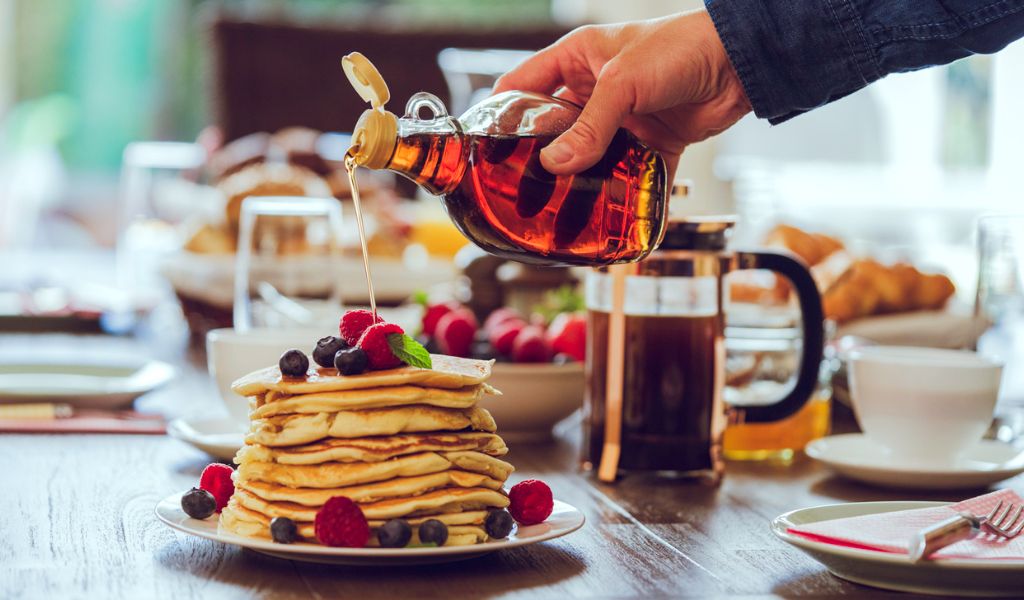
In Korea, for instance, pine sap is a natural sweetener in traditional desserts. Birch sap, on the other hand, has a subtle flavor profile that makes it perfect for delicate sauces or as a unique liquid base in smoothies and cocktails.
Tree saps even have a role to play in the world of alcoholic beverages. Retsina, a traditional Greek wine, incorporates pine sap, which gives it a distinct, resinous taste. Similarly, birch sap can be fermented into wine or beer, creating a beverage that is both delicious and rich in nutrients.
List Of Edible Tree Saps
Is tree sap edible to eat? The answer varies depending on the type of tree sap and how it is processed. Here are some common edible tree saps to try:
- Maple trees
- Birch trees
- Ironwood
- Sycamore
- Walnut
- Palm trees
- Spruce trees
- Bamboo
- Agave
- Manna ash
Maple Trees
It’s hard to talk about edible tree sap without mentioning maple trees. These trees, mainly found in North America, are the primary source of the maple syrup that sweetens our pancakes and waffles. What you might not know is that sugar maple sap (Acer saccharum) is about 98% water and 2% sugar with a surprisingly subtle, sweet taste.
According to Statista, the United States produces around 4.2 million gallons of maple syrup annually, with Vermont being the largest contributor, accounting for over 1.9 million gallons.

Over the past decade, there has been a notable increase in the demand for natural and organic sweeteners. It leads to a 10% increase in global maple syrup consumption.
Birch Trees
Birch trees offer another type of edible sap, often celebrated for its mineral content and subtle sweetness. Mostly found in colder climates, birch sap has been traditionally used in Northern European countries and Russia for its medicinal properties. Also, its delicate flavor makes birch sap ideal for creating unique beverages and culinary dishes.
Unlike maple, large-scale production of birch syrup is relatively rare. Alaska is one of the few places where it’s produced commercially, with an estimated output of 1,000-2,000 gallons per year. The conversion rate of birch sap to syrup is more challenging than maple. It takes approximately 100 gallons of birch sap to produce just one gallon of birch syrup.
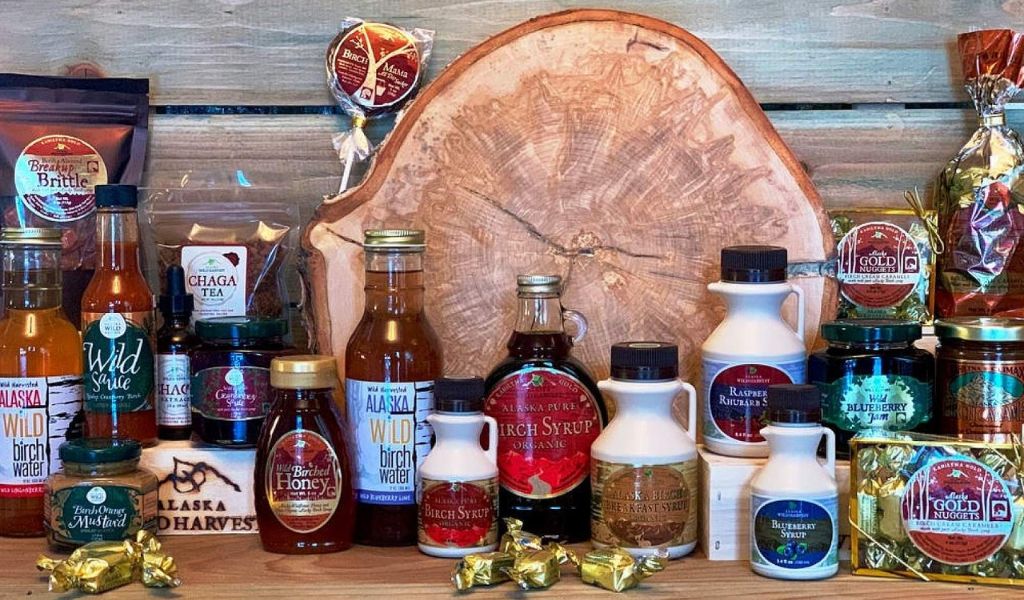
The sugar content in birch sap is lower compared to maple, ranging between 0.5% to 2%. It contributes to the higher sap-to-syrup ratio and a more labor-intensive production process.
Other Trees With Edible Sap
If you thought maple and birch trees were the only sources of edible sap, you’re in for a treat. From the uniquely flavored syrup of walnut trees to the medicinal qualities of ironwood sap, there’s a wide range of lesser-known but equally intriguing options:
- Ironwood trees provide a sap that is not common but comes with various medicinal uses. In some traditional practices, we can apply the sap to relieve minor skin conditions.
- Sycamore trees produce a sap that can be boiled down into syrup. It’s less sweet than maple syrup but offers a unique, malty flavor.
- Walnut trees’ sap is another source of a uniquely flavored syrup. Its taste combines traditional maple syrup and the earthy undertones of walnuts.
- Palm trees, especially coconut and date palms, have a sap that we can ferment to create an alcoholic beverage known as “toddy” or reduce it to a syrup known as “jaggery.”
- Spruce trees‘ sap is a famous ingredient in making spruce gum and tea. Native Americans and early settlers traditionally used this gum as a source of vitamin C.
- Agave trees produce sap, which is the primary ingredient for making tequila. Consider boiling it down to produce agave nectar, a sweetener that is increasingly popular as an alternative to sugar.
As mentioned earlier, “Is tree sap edible?” doesn’t have a simple yes or no answer. Besides edible tree sap, it’s crucial to exercise caution because not all tree saps are safe for consumption. For example, pine sap, though versatile for various purposes, is generally not suitable for direct consumption due to the potential for digestive discomfort.
Eucalyptus gum, another type of tree sap, is considered toxic and should never be ingested. Yew tree sap is exceptionally poisonous, and even a tiny amount can be fatal if consumed.
Similarly, dogwood tree sap falls into the category of inedible saps, and users should handle it with care and never eat or drink it due to potential health risks. Remember to equip yourself with proper knowledge of the specific tree sap’s safety before considering it for consumption.
Tree Sap Vs Tree Resin: Key Differences
Though they might appear similar, tree sap and tree resin are not the same. To help clarify these two, we’ve compiled a detailed table that explains the key differences.
| Attribute | Tree Sap | Tree Resin |
| Composition | Water, sugars, amino acids, and minerals | Terpenes, volatile oils, and other organic compounds |
| Texture | Liquid and watery | Viscous, sticky, and can harden over time |
| Color | Clear to slightly yellow or amber | Varies; often amber, dark brown, or reddish |
| Taste | Sweet, subtle flavors | Bitter or unpleasant taste |
| Odor | Minimal to none | Strong, often aromatic or pungent |
| Primary Function in Tree | Transports nutrients and water | Seals wounds, prevents infection, deters pests |
| Season of Collection | Generally spring | Can be collected year-round |
| Edibility | Many are edible, like maple and birch | Most are not edible; some used in traditional medicine |
| Common Uses | Syrups, beverages, medicinal tonics | Varnishes, adhesives, incense, traditional medicine |
| Shelf Life | Short, especially if not processed | Long-lasting when hardened |
| Solubility in Water | Highly soluble | Insoluble, often requires solvents like alcohol |
This way, whether you’re considering tapping a tree for homemade syrup or need resin for a DIY project, you’ll know exactly what you’re working with.
The Journey Of Maple Sap To Syrup
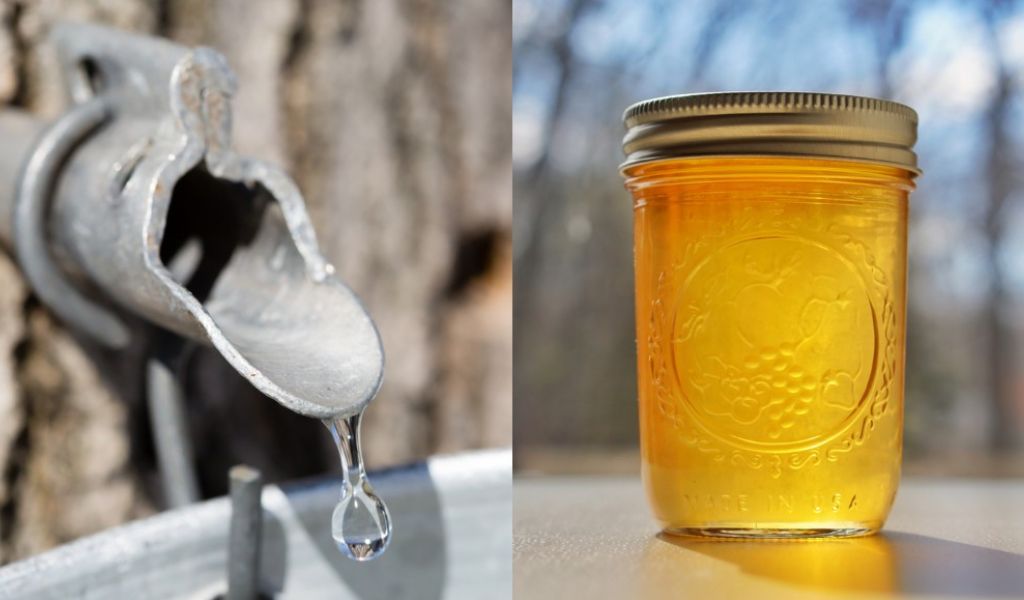
If you’re curious about how that delicious maple syrup makes its way to your pancakes and waffles, we’ve got you covered. Here is the fascinating process, broken down into detailed steps to turn maple sap into tasty syrup:
Step 1: Tapping
The process starts in early spring, ideally when night temperatures are freezing but days are above freezing. Drill a hole about 2 to 4 feet above the ground in the trunk of a Sugar Maple or Black Maple tree.
The spot should be at a slight upward angle to help the sap flow. Insert a spout, known as a “spile,” into the hole, which guides the sap into a bucket hung beneath it.
Step 2: Collecting
Sap will immediately flow into your collection bucket or reservoir if the conditions are right. If you use a more advanced system, tubing can connect multiple trees to a single, centralized collection point. The sap flow relies heavily on the fluctuating temperatures between day and night.
Step 3: Boiling
This step is where the transformation happens. Transfer the collected sap to a flat, wide pan over a heat source.
As the sap boils, water evaporates, leaving behind a more concentrated liquid. This part requires caution: You need to frequently check the boiling sap to ensure it doesn’t burn and to determine when it has reached the correct consistency.
It typically takes about 40 gallons of sap to make just one gallon of maple syrup. This ratio can vary depending on the sugar content of the sap, which usually hovers around 2%.
Step 4: Filtering and Refining
After boiling, it’s crucial to filter the liquid to remove any remaining impurities, such as twigs, leaves, or ‘sugar sand,’ a natural byproduct. At this stage, you may also test the syrup’s density with specialized equipment like a hydrometer to ensure it meets quality standards.
Step 5: Bottling
Once the syrup has passed all quality checks, it’s time for bottling. Pour the syrup into sterilized jars or bottles, taking care not to spill any liquid gold. Seal the containers while the syrup is still hot to ensure a vacuum seal, which aids preservation.
So there you have it—every detail of how simple tree sap magically turns into the delicious golden syrup that elevates your breakfast to new heights!
See more: What side of the tree does moss grow?
FAQs
Who eats tree sap and why?
People worldwide consume tree sap, and its utilization frequently has deep roots in ancient traditions and practices. In some cultures, it’s a cherished home remedy for various diseases, credited with antimicrobial and anti-inflammatory properties.
For culinary lovers, it’s a natural sweetener that adds a unique flavor to different dishes and beverages. Whether consumed for its health benefits or as a gastronomic delight, tree sap holds a special place in many communities.
What does tree sap taste like?
When it comes to taste, tree sap is a nuanced ingredient. Typically, you’ll notice a gentle sweetness that forms the base of its flavor profile. Depending on the type of tree it comes from, it can also have additional undertones—anything from a rich, woody aroma to a lighter, earthy taste. It’s this complex mixture of flavors that makes tree sap so versatile and beloved in various culinary applications.
Is tree sap beneficial for the skin?
Yes, indeed! Tree sap, especially from certain types like pine and birch, is rich in nutrients and compounds that benefit the skin. It has natural antiseptic qualities that help cleanse the skin, along with anti-inflammatory properties that may reduce redness and irritation. That’s why you’ll often find tree sap ingredients in natural skincare products, such as serums, lotions, and even soaps.
Can you remove tree sap from cars and clothes?
Absolutely, tree sap doesn’t have to be a permanent stain on your vehicle or clothing. Specialized products, such as sap removers or even turpentine, can do wonders for lifting these sticky residues.
Apply the remover following the product’s instructions, let it sit for the recommended time, and then wipe or wash away. For clothes, pre-treating the sap stain before a regular wash can also be effective.
Conclusion
There you have it—a detailed guide that answers your question: “Is tree sap edible?” and dives deep into its many applications. From its varied uses in daily life to its role as nature’s energy drink, tree sap is a remarkable substance.
We hope this article has been informative and enjoyable for you. Follow us for more valuable insights and sharing!

